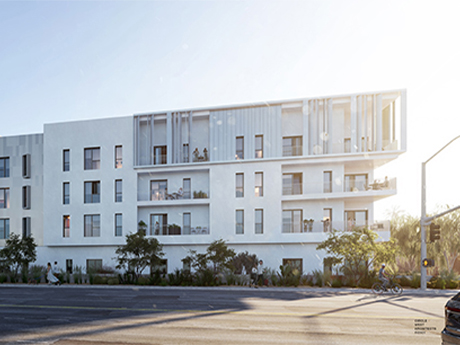By Sandy Schmid, director of acquisitions and development, StarPoint Properties
In the fast-paced world of commercial real estate, foresight is as valuable as bricks and mortar.
Despite whispers of distress on the horizon for the Lone Star State in 2024, the multifamily real estate market is ablaze with potential. Texas is one of the hottest destinations for developers and investors, and the strategic play is to not just weather the storm, but rather to ride it to success.
Recent predictions of multifamily distress starting in the latter half of 2023 have certainly raised eyebrows and fueled speculation. However, predicting the Texas real estate market is akin to forecasting a Wild West shootout — a challenging task given the state’s history of resilience and its ongoing growth. Texas has consistently proven its ability to rebound from economic challenges, and current indicators suggest that the multifamily sector is poised for sustained growth.

A Growth Powerhouse
One factor supporting the optimistic outlook is the impressive trajectory of Texas’ GDP growth. The state saw a notable increase in its GDP over recent years: 5.7 percent growth in 2021, 2.7 percent in 2022 and 3 percent in the first quarter of 2023 alone. This data compares favorably with national GDP growth of 5.9 percent in 2021, 2.1-plus percent in 2022 and anticipated rate of 2.6 percent growth in 2023, respectively. This economic resilience contributes to a favorable environment for real estate and increased return on investment for investors.
Metropolitan Dynamics
The heartbeat of Texas’ multifamily sector echoes in the vibrant metropolitan areas of Dallas-Fort Worth (DFW) and Austin. The current metro area population of DFW stands at a robust 7.9 million, marking a significant increase from 2019.
Meanwhile, Austin, experiencing an astounding 8.5 percent increase in its metro area population from 2019 to 2023, clearly shows the state’s attractiveness to a rapidly growing population of young people and families, as well as corporations relocating their headquarters to this dynamic city.
Texas vs. National Population Growth: A Compelling Narrative
Texas, with a population of nearly 31 million in 2022, emerged as the second-most populous state in the entire country, trailing only California.
The state’s consistent position among the nation’s fastest-growing and largest-gaining states is evident. The population surge extends beyond major urban centers, with 11 of Texas’s 254 counties more than doubling their population from 2000 to 2022. This sustained growth is continuing to propel Texas real estate into a safehold for investors. It’s truly in a league of its own.
Rent Growth Dynamics
You can take the pulse on the future of multifamily real estate by looking closely at rent growth, and the national landscape reveals a cooling trend.
Despite leaping forward in 2021 with over 462,000 new multifamily construction starts, the overall market has cooled from the high point of 2021-2022. Lukewarm rent growth of 3.5 to 4 percent, increased vacancies surpassing 6 percent and a unit absorption decline of 15 percent year-over-year characterize the national scene.
In contrast, the DFW area witnessed a dramatic shift with an unsustainable 12.5 percent average annual rent growth in 2021 and 2022. A market correction in 2023 was evident, with expectations of the average rent growing at less than 5 percent for the full year.
According to 2023 data from Statista, in Austin, the median rent for one- and two-bedroom apartments reached $1,634 by the end of 2022, despite a surge of nearly 28 percent in October 2021 following the ramifications of the COVID-19 pandemic. Texas is mid-price-range rental market with the potential to see rent growth and multifamily property development increase more and more rapidly as time goes on.
Strategic Landscape, Future Vision
As we begin 2024, the Texas multifamily market stands as a testament to strategic optimism. Developers and investors are not only reacting to challenges but also actively shaping the narrative of real estate success in the state.
The multifamily sector in Texas is most definitely a strategic battlefield where those with foresight and agility can secure clear victories. With savvy positioning, diversified investments and a willingness to ride the wave of economic ups and downs, developers and investors can do more than just thrive — they can define the future of Texas multifamily real estate entirely.
With over 20 years of real estate experience as an acquisitions officer, developer, builder, and architect, Sandy Schmid has sourced over $1 billion of development projects for residential units and has led entitlements on over $1 billion of development.


